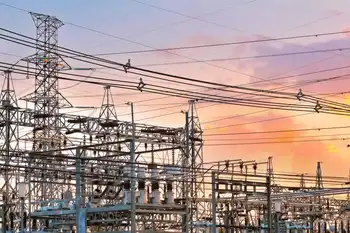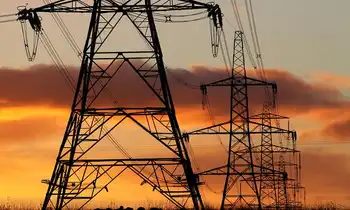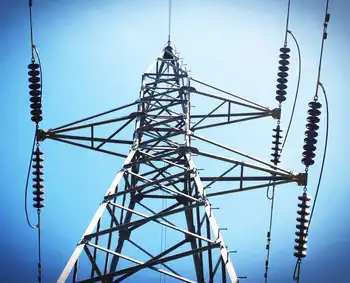WALNUT CREEK, CALIFORNIA - It was only five years ago that cities around the state were worrying about how to keep the lights on and energy prices down for their residents. In the East Bay and elsewhere, city leaders considered building their own, or becoming partners in, small local power plants.
At the time, many local officials wanted to get out from under Pacific Gas & Electric's energy grasp to ensure a stable power supply for residents and businesses. The rolling blackouts of summer 2001 are a thing of the past, but cities are still considering measures to help make sure those dark days are not revisited. Pleasanton, for example, is researching the merits of becoming a "community choice aggregator." As an "aggregate," a city could borrow money at lower-than-standard rates to buy enough power for all its residences and businesses and then sell it to them - quite possibly at a cheaper rate than could a utility company. The city would still need to use PG&E lines, but it would have more control over local energy. Rate discounts would be possible, and the city would be eligible for other breaks. A similar plan was presented in January to the Livermore City Council, which asked its staff to continue to work on the idea. Other cities, such as Oakland, Berkeley and Emeryville already have participated in, and accepted, a feasibility study sponsored by the Local Government Commission in Sacramento examining becoming an aggregate. Pleasanton's move comes as the city is updating its entire general plan, an outline for future development and growth. Included in that will be an energy element, a plan to ensure a sustainable energy future for the city. Like most aspects of the general plan, the energy element is expected to go before the City Council later this year. "I think there has been a movement away from the attitude of, 'Hey, let's just keep the lights on,' to 'Let's find a sustainable, more stable energy system,'" said Scott Baker, assistant director for public works in Pleasanton and one of the lead city officials writing the city's energy policy. Just as with any system, there are potential drawbacks to acting as a "community choice aggregator." There's the possibility of competing with PG&E and not being able to secure energy cheaper than PG&E - and the chance that revenues would not cover the cost of managing such a system. Nevertheless, Baker said, most local governments likely are looking at long-term ideas, not quick fixes such as "peaker plants," which usually were profitable only when the energy use was at its peak. Such plants are not normally efficient producers of power. During 2001's summer of rolling blackouts, two companies - United Energy Technology and United Native Depository Corp. - were showing interest in building a small generator in the area, which would produce slightly less than 50 megawatts of energy. This plant was to have been overseen by local government and not the state or a utility. At that point, such peaker plants were getting serious attention. "Obviously, because of when this all happened, securing power was a concern," Baker said. "However, I think the time of the peaker plant has passed." Just a few years after the proposals of building such plants in the Tri-Valley, Pleasanton officials wrote a generator siting ordinance that governs where and what types of generators can be built in the city. "We need something better than peaker plants to ensure energy," Baker said. "I think we can do better."
The rolling blackouts of summer 2001 are a thing of the past, but cities are still considering measures to help make sure those dark days are not revisited.
Pleasanton, for example, is researching the merits of becoming a "community choice aggregator." As an "aggregate," a city could borrow money at lower-than-standard rates to buy enough power for all its residences and businesses and then sell it to them - quite possibly at a cheaper rate than could a utility company.
The city would still need to use PG&E lines, but it would have more control over local energy. Rate discounts would be possible, and the city would be eligible for other breaks.
A similar plan was presented in January to the Livermore City Council, which asked its staff to continue to work on the idea. Other cities, such as Oakland, Berkeley and Emeryville already have participated in, and accepted, a feasibility study sponsored by the Local Government Commission in Sacramento examining becoming an aggregate.
Pleasanton's move comes as the city is updating its entire general plan, an outline for future development and growth. Included in that will be an energy element, a plan to ensure a sustainable energy future for the city. Like most aspects of the general plan, the energy element is expected to go before the City Council later this year.
"I think there has been a movement away from the attitude of, 'Hey, let's just keep the lights on,' to 'Let's find a sustainable, more stable energy system,'" said Scott Baker, assistant director for public works in Pleasanton and one of the lead city officials writing the city's energy policy.
Just as with any system, there are potential drawbacks to acting as a "community choice aggregator." There's the possibility of competing with PG&E and not being able to secure energy cheaper than PG&E - and the chance that revenues would not cover the cost of managing such a system.
Nevertheless, Baker said, most local governments likely are looking at long-term ideas, not quick fixes such as "peaker plants," which usually were profitable only when the energy use was at its peak. Such plants are not normally efficient producers of power.
During 2001's summer of rolling blackouts, two companies - United Energy Technology and United Native Depository Corp. - were showing interest in building a small generator in the area, which would produce slightly less than 50 megawatts of energy. This plant was to have been overseen by local government and not the state or a utility.
At that point, such peaker plants were getting serious attention.
"Obviously, because of when this all happened, securing power was a concern," Baker said. "However, I think the time of the peaker plant has passed."
Just a few years after the proposals of building such plants in the Tri-Valley, Pleasanton officials wrote a generator siting ordinance that governs where and what types of generators can be built in the city.
"We need something better than peaker plants to ensure energy," Baker said. "I think we can do better."
Related News

The UK’s energy plan is all very well but it ignores the forecast rise in global sea-levels
LONDON - IN concentrating on electrically driven cars, the UK’s new ten-point energy plans ignores the elephant in the room.
It fails to address the forecast six-metre sea level rise from global warming rapidly melting the Greenland ice sheet.
Rising sea levels and storm surge, combined with increasingly heavy rainfall swelling our rivers, threaten not only hundreds of coastal communities but also much unprotected strategic infrastructure.
New nuclear power stations proposed in this United Kingdom plan would produce radioactive waste requiring thousands of years to safely decay.
This is hardly the solution for the Green Energy future that our overlooked marine energy resource could…




